
Jump Squats Exercise & Benefits
Key Takeaways
- Jump squats work the quads, hamstrings, glutes, and core just like regular squats. With the addition of the jump, the lower body muscles get worked too.
- There are risks in performing this exercise. We outline these potential issues and give tips on avoiding injury.
- Once you have learned the basic jump squat, you can move on to one of the 7 variations we explore in the second half of the article.
For many, squats are part of the foundation of their workout routine.
Are you one of those people?
Bored with just doing regular squats? Ready to take it up a notch?
If you are, jump squats are a great alternative to doing ordinary squats. Even if you’ve never done a squat before, you may want to include this exercise in your rotation. After, of course, you learn the proper form for a squat.
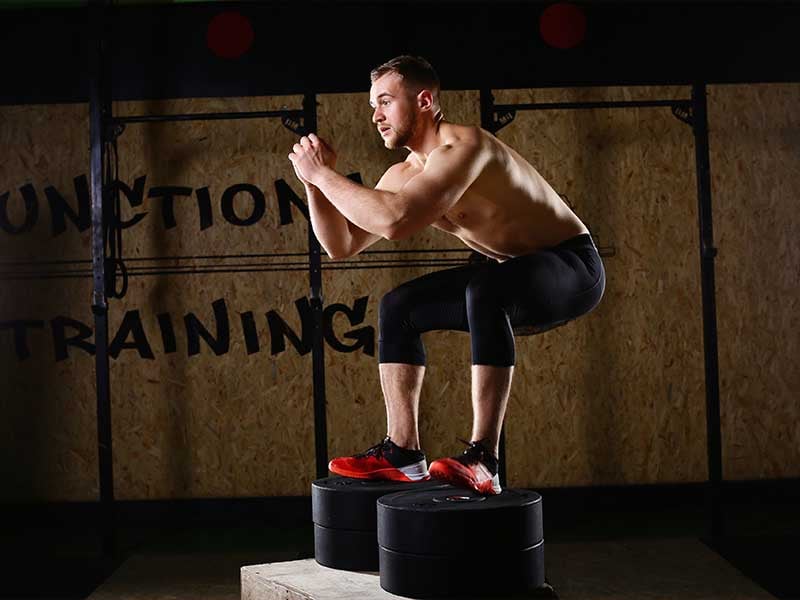
Jump squats are an excellent way to get in your cardio as a high-intensity interval training workout. The explosive power of the “jump” in this exercise will get your heart rate up and help you burn fat. Plus, you’ll reap other benefits as well.
What are the benefits to jump squats compared to regular squats? Here are a few:
- Build explosive power – take off faster and move more nimbly
- Increase vertical jump height
- Conditioning of the joints and muscles of the lower body
- Burn calories faster
If you’re interested in adding jump squats to your routine, keep reading. We’ll discuss the:
- Muscles worked
- Proper form
- Tips for success
- Variations once you’ve perfected your form
Jump Squats Muscles Worked
Regular squats primarily work the glutes, hamstrings, core, and quads. When adding in the jumping portion of jump squats, you’ll engage far more muscles.
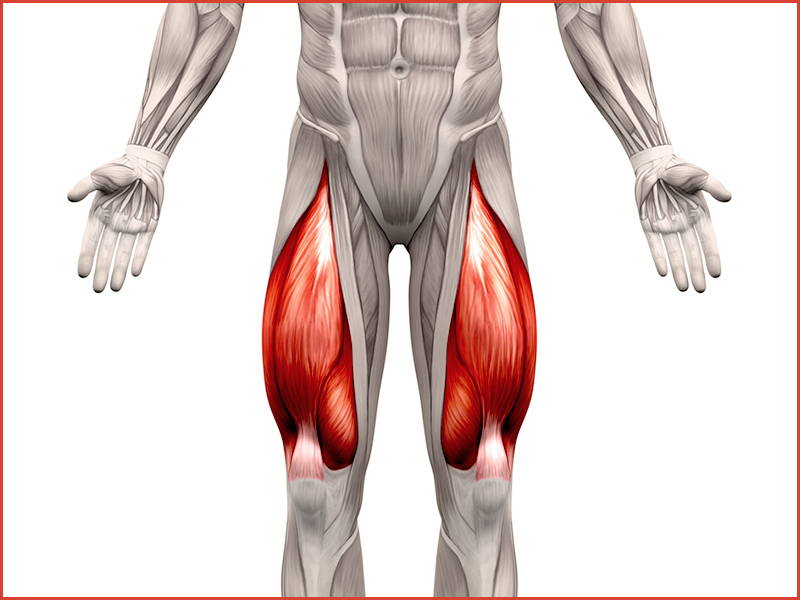
Jump squats will work all the muscles in the lower body, including the:
- Shins
- Calves
- Ankles
- Feet
- Lower back
To perform the jump squat properly, you’ll engage most of your muscles from the abdomen down. The arms may get a slight workout when doing jump squats with bodyweight only. Incorporating weights will involve the muscles in the upper body as well.
How to Perform Jump Squats
Before you can work on your jump squat form, you’ll first need to know how to do a regular squat. Getting the form down perfectly will allow you to perform the jump squat correctly. Failure to use proper form will create a high risk for injury, especially in the knees and ankles.

If you haven’t already been doing squats as part of your lower body routine, you’ll want to practice them first. Here are instructions on how to squat like a pro.
You also may want to check out Tom Platz’s master class, with videos of him critiquing the squat. What better way to learn the proper form for a squat than from the Golden Era bodybuilder, “The Quadfather” himself?
Once you’re sure you’ve got the squat form down, you’ll be ready to progress to jump squats. Here are step-by-step instructions for the jump squat. Then, we’ll offer some tips for success and variations to continuously challenge your muscles.
The Steps to Performing Jump Squats Properly

- Stand with your feet parallel, toes facing slightly outward, spaced just past shoulder-width apart.
- Lower yourself down into the squat position, breathing in as you go down. Hips back and down, chest and chin up, face forward.
- Get as low as you can comfortably without breaking form. Keep your hands to your sides or out in front, whichever is more comfortable for you. Placing your hands out in front can help with balance.
- Breathe out as you drive your body up in one explosive movement, starting with the balls of your feet. Move your hands with your body – if they’re out in front, move them backward. If your arms are at your sides, lift them up to your chest as you jump.
- Continue to push yourself as you drive your hands back or up towards the sky or ceiling. Your legs should be straight at the highest point of the jump.
- Keep your core tight as you begin to descend back down to the ground. Be sure to land just as you started, on the balls of your feet. Continue down, bending your knees to absorb the shock and avoid injury.
- You should now be back in the starting position. Continue each jump squat rep until you’ve completed the set.
Complete 8 – 10 reps for two sets when starting out. Add another set once you’ve mastered the jump squat form.
Now, let’s look at some tips for success.
Jump Squat Tips for Success
Using these tips as you perfect jump squats will help you avoid injury and get the most out of the exercise.
Use Proper Knee Placement
Avoid unnecessary pressure on your knees by keeping them in line with your toes while in the squatting position. A deeper squat position requires knees to be in line with your ankle or foot.
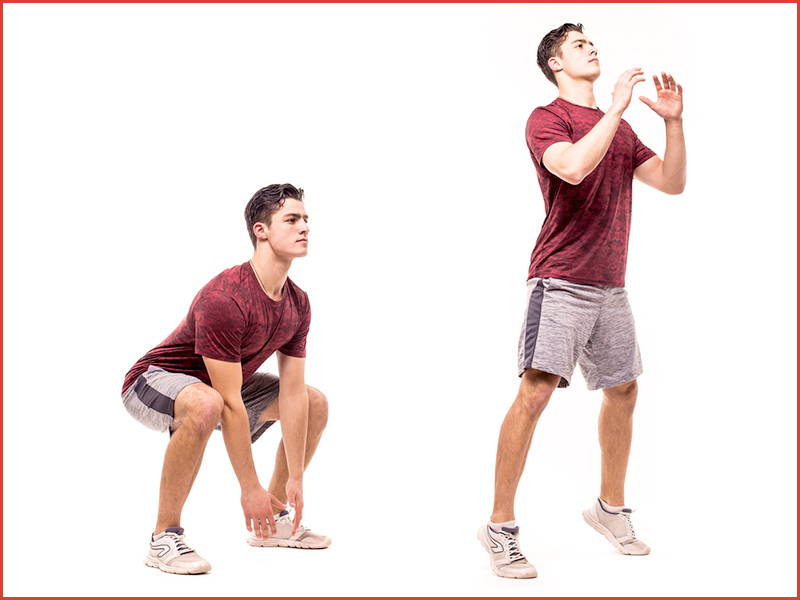
Make sure your knees stay behind your toes while performing the squat. If they are too far forward, you could cause knee strain or throw yourself off balance.
Paying attention to knee placement throughout the jump squat will reduce the risk of injuries:
- Torn ligaments in the knee or ankle
- Twisted or sprained ankle
- Stress fractures in the lower leg or foot
Find the Right Stance for You
Your body positioning and stance you take while performing jump squats may differ from others. It’s no surprise that all bodies are different. Some people have long limbs and/or torsos while others don’t.

When practicing your jump squat form, figure out positioning and stance that works for you. If you notice discomfort when performing this exercise, adjust your positioning until you feel comfortable.
This will also reduce the chance of an injury while performing this and other exercises.
Don’t Forget to Breathe
Knowing when to breathe during your workout is important. When completing your jump squat reps, you should breathe in while lowering into the squat. Once you’ve moved through the squat, remember to breathe out as you start to jump.
Intense HIIT-style workouts like jump squats can cause some to instinctively hold their breath. Doing so will lower your stamina and endurance, making it harder to complete the desired reps and sets.
Making it a habit to hold your breath could also cause you to get lightheaded or even pass out.
Mind Your Foot Placement
Having proper foot placement when completing jump squats will reduce the risk of injury and provide maximum benefit. Keep your feet in the same position in both phases to maintain stability and balance.

During the jumping phase, you want to jump off and land on the balls of your feet. This reduces the shock you’d feel through your feet all the way up to your knees. Repeated shock to the lower extremities could cause stress fractures or result in chronic pain.
Bending your knees as you lower your body down will also help absorb the impact. It will also help strengthen your tendons, ligaments, and muscles.
Now, let’s look at some variations you can use once you’ve mastered the form to increase the challenge.
Jump Squat Variations
Bodyweight jump squats are great, but what if you’ve got them down and want more? Here are a few variations you can do, including other plyometric jumping exercises.
1. Weighted Jump Squats
The natural transition from bodyweight jump squats is to move to jump squats with weights. The form is exactly the same, you’ll just add a dumbbell or kettlebell to each hand.
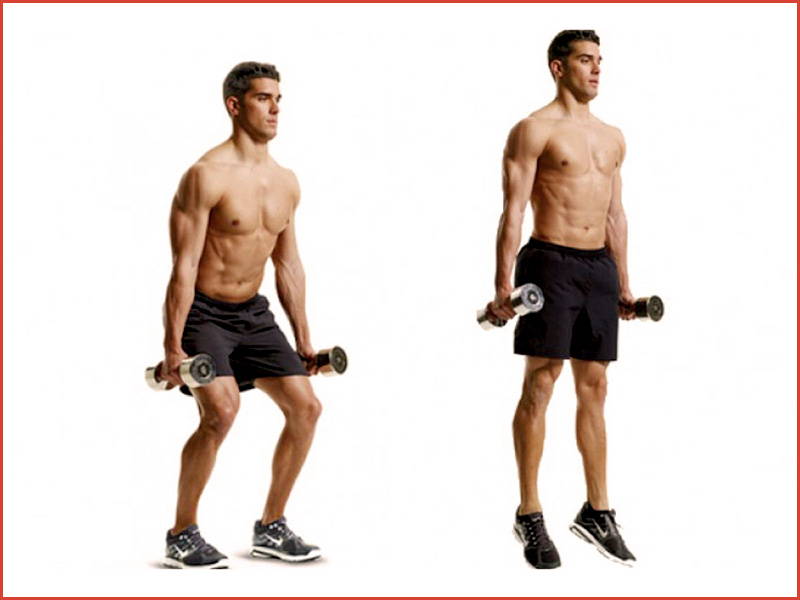
Adding weight will increase the resistance, improving muscle building while you work on your cardio. Use a light weight for this, as too heavy of a weight can throw you off balance or harm your joints.
2. Jump Lunges
The jump lunge is the same as a regular lunge, but it incorporates jumping as you switch legs. Lunges have different benefits than squats and are considered to be a more advanced exercise. Building a solid foundation with squats before switching to lunges will help you reap even more benefits.

Before trying jump lunges, be sure you can do a stationary lunge first. Then, check out this WikiHow for instructions on completing the jumping lunge without injury.
3. Box Jump Squats
This variation will help with spatial awareness and mobility while increasing your muscle building potential.

Box jump squats incorporate a raised platform to jump onto, rather than jumping straight up and back down. Start off small with a box or platform just a few inches off the ground, before you progress higher. Your height and leg length will determine how high of a jump you can safely do.
Keep your foot placement in mind and use your bent knees to soften the landing, just like in jump squats
4. Ski Jump Squats
Also called a jumping ski squat, this variation mimics skiing form when doing this exercise. Here, you’ll keep your feet close together, just a few inches apart.
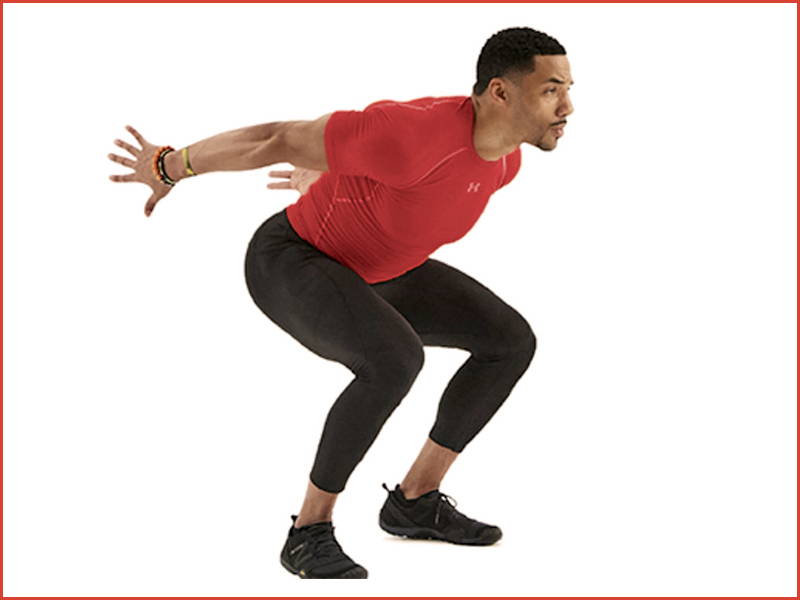
Place your arms in front of you with hands together during the squat. As you rise up into the jump, push your arms straight back and behind you. If you watch this movement in the mirror, it looks like you’re using your arms the same way a skier does.
5. Low Jump Squats
To really get the glutes and quads burning, you can try this variation to the jump squat. The low jump squat is performed the same way, but your body stays in a low position during the jump.
Rather than propel your entire body off the ground, you’ll stay in the squat position and only get a few inches of height.
6. Frog Jumps
Did you ever play Frogger when you were younger, or Leapfrog on the playground? Bringing back memories, aren’t we?
If this is the case, then frog jumps will bring you waves of nostalgia. This exercise is done just like jumps squats, but rather than stay in place, you’ll leap forward.
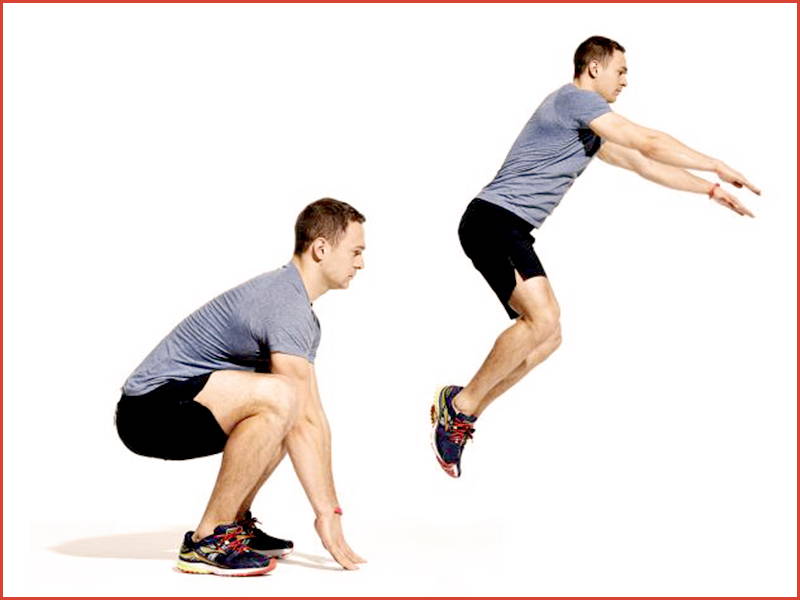
Make sure you have good balance and form for this one. Challenge yourself to go higher and farther, but be sure you mind your knees and feet to avoid injury.
7. Stair Jumps
Stair jumps are a combination of box jumps and frog jumps. During the jump phase, you’ll propel yourself up and forward using a staircase.
Get your form down doing jump squats, then check out this gif to see how to do stair jumps properly. As you improve, increase the number of stairs you jump on each phase.
Wrapping Up
Jump squats are a plyometric exercise that can help build jumping power and improve stability. This is just one exercise popular with athletes as it can also help improve stamina and endurance.
The jump squat and variation exercises are a great addition to your lower body workout. Use the tips for success to reduce the risk of injury. The variations will increase the challenge, providing both muscle building and cardio benefits.
Proper form is key to preventing injury, but so is having a solid foundation for bone and joints. Vintage Bend™ will improve mobility, strengthen joints, and reduce inflammation where you need it most.
Do you include plyometric exercises like jump squats in your workout rotation? Have you tried the variations listed in today’s article? We’d love to know what’s working in your daily routine in the comments below.









